paris
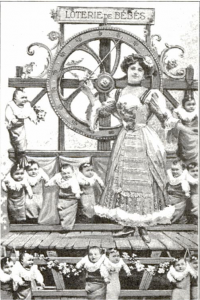 It sounds like something straight out of the annals of criminal behavior, but while it is strange, the authorities decided that it wasn’t illegal. Everyone knows that the adoption process, and the cost involved can make it almost impossible for many parents to adopt a child, but in late 1911, Parisians seeking to become parents could do things the regular way. Or they could take a more unusual option offered to them that year: A baby lottery. That’s right a baby lottery.
It sounds like something straight out of the annals of criminal behavior, but while it is strange, the authorities decided that it wasn’t illegal. Everyone knows that the adoption process, and the cost involved can make it almost impossible for many parents to adopt a child, but in late 1911, Parisians seeking to become parents could do things the regular way. Or they could take a more unusual option offered to them that year: A baby lottery. That’s right a baby lottery.
In January 1912, a foundling hospital, which was actually a children’s home, decided to hold “a raffle of live babies.” The hospital’s management check on the legalities and once they received the go-ahead, the plan went forward. The plan was two-fold. They wanted to find homes for these sweet abandoned babies, and they wanted to raise funds for the children’s home and other charitable institutions.
To protect the innocent babies, “An investigation of the winners was made, of course, to determine their desirability as foster parents.” By modern standards, this sort of thing feels bizarre and crazy, not to mention neglectful. But, as John F Ptak points out in his blog post about the lottery, “in comparison with some bitter early histories of the want of tenderness in the care of children, and keeping in mind the great leap forward in the creation of the foundling hospitals and what they represented in the face of not having anywhere for unwanted and impossible babies to go, the idea of the lottery for cute babies in 1912 doesn’t look so bad when placed in its historical context…With the terrible history of infanticide and exposure not too dimly removed from this time, the lottery seems far less horrible than its antiquarian components.” I would agree. While the idea was odd, it was similar to the Orphan Trains, with the exception of the background checks done on the parents wanting these babies.
It is an amazing thing when we look back on it, and most of us would be somewhat appalled, but for these  babies, it was a chance at a loving home, and it would appear that it worked very well…at least in that era. I don’t know how successful such a thing would be in this day and age. The dangers would very likely outweigh the good, and that is sad, because adoption is so expensive that many families remain childless. They just don’t have the money to go through a reputable agency, and anything else is a scary proposition. I would worry about they kinds of people who would try for something like this these days too. Most would be fine I’m sure, but there are a lot of crazy people out there too. I think the 1912 Paris Baby Lottery was an event of another era that will most likely never be seen again.
babies, it was a chance at a loving home, and it would appear that it worked very well…at least in that era. I don’t know how successful such a thing would be in this day and age. The dangers would very likely outweigh the good, and that is sad, because adoption is so expensive that many families remain childless. They just don’t have the money to go through a reputable agency, and anything else is a scary proposition. I would worry about they kinds of people who would try for something like this these days too. Most would be fine I’m sure, but there are a lot of crazy people out there too. I think the 1912 Paris Baby Lottery was an event of another era that will most likely never be seen again.
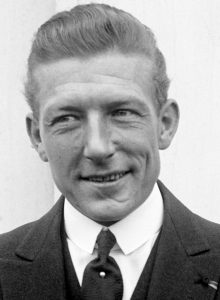
 It was a time when the race across the Atlantic Ocean was a big as the Race to Space would become years later. Since the invention of planes, everyone trained as a pilot wanted to set some sort of record in the aviation industry, and there were plenty of them out there to set. One in particular, the transatlantic flight was in its early stages. The world was waiting for that first successful transatlantic non-stop flight.
It was a time when the race across the Atlantic Ocean was a big as the Race to Space would become years later. Since the invention of planes, everyone trained as a pilot wanted to set some sort of record in the aviation industry, and there were plenty of them out there to set. One in particular, the transatlantic flight was in its early stages. The world was waiting for that first successful transatlantic non-stop flight.
Then on May 8, 1927, it looked like all that would change. That morning French aviator, Captain Charles Nungesser and his co-pilot, Francis Coli took off from Paris in a plane they called The White Bird, to the surprise of many observers who felt the weather conditions were not favorable. Nevertheless, the White Bird taxied down the runway at 5:17 am on that Sunday morning, bound for New York. The plane rose and faltered, and after rolling half a mile it finally labored into the air. As it disappeared in the distance, it was no more than 700 feet off the ground when. Less than five hours later the White Bird was sighted leaving the Irish coast on its way westward over the Atlantic. It looked as if all was going well.
The Bi-Plane was later spotted in the early morning off Nova Scotia fighting strong head winds and heading for the Maine Seaboard. It had been in the air for approximately 33 hours. Shortly after the sighting the plane mysteriously disappeared while trying to be the first to complete the non-stop transatlantic flight, flying from Paris to New York City. On the afternoon of May 9, 1927, Anson Berry, fishing in his canoe on Round Lake in eastern Maine, heard what sounded like an engine overhead, approaching from the northeast. He could not see the airplane, if that was what it was, because of a heavy overcast. He assumed that it was the White Bird, because there weren’t many planes flying in those days.
The engine sounded erratic. Moments later it stopped, and Berry heard what he described years later as a faint,  ripping crash. The afternoon was wearing on, and the always unsteady spring weather was worsening, with rain beginning to fall. Perhaps because he did not trust the weather to hold, Berry did not investigate what he heard. The plane, pilot and navigator have never been seen since and two weeks later American aviator Charles Lindbergh, flying solo, successfully crossed from New York to Paris. Many people wondered why no one had ever happened upon the wreck, but the probable area of the crash is in an area of heavy underbrush, and it is likely that the wreck has been buried in the foliage.
ripping crash. The afternoon was wearing on, and the always unsteady spring weather was worsening, with rain beginning to fall. Perhaps because he did not trust the weather to hold, Berry did not investigate what he heard. The plane, pilot and navigator have never been seen since and two weeks later American aviator Charles Lindbergh, flying solo, successfully crossed from New York to Paris. Many people wondered why no one had ever happened upon the wreck, but the probable area of the crash is in an area of heavy underbrush, and it is likely that the wreck has been buried in the foliage.
 Jewelry heists usually come in the form of someone robbing a jewelry store, and they are usually caught pretty quickly due to all the security cameras these days. But, when a jewelry heist nets 85 million euros ($95,058,560 in US dollars) the thieves have to do a little more planning…if they plan to remain anonymous and get away with their heist, that is. In reality, there were two heists that took place at Harry Winston’s Avenue Montaigne shop, and the grand total was $113 million in jewelry and other valuables. The heists took place in October of 2007 and December of 2008.
Jewelry heists usually come in the form of someone robbing a jewelry store, and they are usually caught pretty quickly due to all the security cameras these days. But, when a jewelry heist nets 85 million euros ($95,058,560 in US dollars) the thieves have to do a little more planning…if they plan to remain anonymous and get away with their heist, that is. In reality, there were two heists that took place at Harry Winston’s Avenue Montaigne shop, and the grand total was $113 million in jewelry and other valuables. The heists took place in October of 2007 and December of 2008.
These robbers were very sophisticated in how they carried out these heists. The heists were carried out in broad daylight. In the 2008 robbery, the men boldly walked in through the front door of Harry Winston’s Paris shop. Despite the fact that three of them were dressed as women in wigs and heels, they were all men. They walked in, pulled a hand grenade and a gun, and in less than 20 minutes, the security guard held the door for them as they walked out to a waiting car with their rolling suitcase filled with over $90 million of jewels and watches.
Eight men were convicted for their roles in those two bold jewelry heists in 2007 and 2008, in which they made off with an estimated $113 million in jewelry and other valuables, most of which has never been found. It was said that the police never had a chance. That was in December of 2008 and to the frustration of Harry Winston, their insurer Lloyds of London, and the police, it was the second massive jewelry heist at the store in just over a year. The earlier job took place in October in 2007 and involved four men masquerading as builders. They 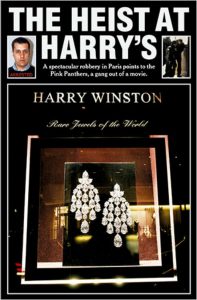 were let in through a back door with the help of an inside man and made off with close to $30 million in diamonds, luxury watches, necklaces, earrings and other valuables
were let in through a back door with the help of an inside man and made off with close to $30 million in diamonds, luxury watches, necklaces, earrings and other valuables
Finally, in March 2011, there was a small breakthrough when the police recovered some of the jewelry after a 2009 crime sweep in Paris. Police recovered $20 million worth of jewelry (19 rings and three sets of earrings) from the 2008 heist. Found in a drain in the Parisian suburb of Seine-Saint-Denis, it was all that was ever located.
After a trial that started in early February, eight men were convicted for their roles in the crimes. Their sentences ranged from nine months to 15 years. The longest sentence was for the crime’s purported mastermind, Douadi Yahiaoui, a repeat criminal offender and drug trafficker. His 59 year old brother Mohammed was also convicted. In all, the Paris police arrested 25 men in the Harry Winston jewel heist probe. The suspects ranged from 22 years old to 67 years old.
 Jumping out of a plane with a parachute, while not something I would consider doing, has become a favorite pastime for many people, but the original parachute jump was not from an airplane. The first noteworthy parachute jump was made by André-Jacques Garnerin from a hydrogen balloon 3,200 feet above Paris. Apparently, Leonardo da Vinci first conceived the idea of the parachute in his writings, and Frenchman, Louis-Sebastien Lenormand fashioned a kind of parachute out of two umbrellas and jumped from a tree in 1783. But, Garnerin was the first person to actually design and test parachutes capable of slowing a man’s fall from an altitude higher than a tree.
Jumping out of a plane with a parachute, while not something I would consider doing, has become a favorite pastime for many people, but the original parachute jump was not from an airplane. The first noteworthy parachute jump was made by André-Jacques Garnerin from a hydrogen balloon 3,200 feet above Paris. Apparently, Leonardo da Vinci first conceived the idea of the parachute in his writings, and Frenchman, Louis-Sebastien Lenormand fashioned a kind of parachute out of two umbrellas and jumped from a tree in 1783. But, Garnerin was the first person to actually design and test parachutes capable of slowing a man’s fall from an altitude higher than a tree.
I can almost hear the wheels turning in Garnerin’s head, as he first pondered the possibility of using air resistance to slow an individual’s fall from a high altitude, while he was a prisoner of war during the French Revolution. Although he never employed a parachute to escape from the high ramparts of the Hungarian prison where he spent three years, Garnerin never lost interest in the concept of the parachute. In 1797, he completed his first parachute, a canopy 23 feet in diameter and attached to a basket with suspension lines.
On October 22, 1797, Garnerin attached the parachute to a hydrogen balloon and ascended to an altitude of 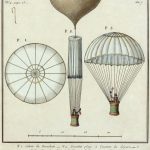 3,200 feet. He then climbed into the basket and severed the parachute from the balloon. Parachutes need an air vent in the top, unbeknownst to Garnerin. As he failed to include said air vent at the top of the prototype, Garnerin’s parachute oscillated wildly in his descent. He landed shaken but unhurt half a mile from the balloon’s takeoff site. In 1799, Garnerin’s wife, Jeanne-Genevieve, became the first female parachutist. In 1802, Garnerin made a spectacular jump from 8,000 feet during an exhibition in England. He died in a balloon accident in 1823 while preparing to test a new parachute. I suppose it could be said that he died doing what he loved. Nevertheless, it would be an awful way to go, if you ask me.
3,200 feet. He then climbed into the basket and severed the parachute from the balloon. Parachutes need an air vent in the top, unbeknownst to Garnerin. As he failed to include said air vent at the top of the prototype, Garnerin’s parachute oscillated wildly in his descent. He landed shaken but unhurt half a mile from the balloon’s takeoff site. In 1799, Garnerin’s wife, Jeanne-Genevieve, became the first female parachutist. In 1802, Garnerin made a spectacular jump from 8,000 feet during an exhibition in England. He died in a balloon accident in 1823 while preparing to test a new parachute. I suppose it could be said that he died doing what he loved. Nevertheless, it would be an awful way to go, if you ask me.
 On June 1, 2009, Air France Flight number 447 went down in the Atlantic Ocean. The flight took off from Rio de Janeiro on May 31, 2009.It was on it’s way to Paris, but nose-dived into the ocean long before reaching it’s destination. All 228 people on board were killed. A combination of bad weather, pilot error, and the captain’s extra-marital affair contributed to the deadliest crash in Air France history. Junior co-pilot Pierre-Cedric Bonin, 32, was piloting the Airbus A330 when it hit a thunderstorm over the sea. Bonin and fellow co-pilot David Robert, 37, pitched their craft sharply up instead of down, a fatal error that caused the plane to stall and and then pitch down, leading to the nose-dive into the ocean. Complicating the situation, Marc Dubois, the 58-year-old captain, had left the cockpit to take a nap, because he had been up all night with his mistress, and by the time he returned, it was too late to avoid catastrophe. Dubois had more than 11,000 flight hours compared to Bonin, who had logged a little less than 3,000.
On June 1, 2009, Air France Flight number 447 went down in the Atlantic Ocean. The flight took off from Rio de Janeiro on May 31, 2009.It was on it’s way to Paris, but nose-dived into the ocean long before reaching it’s destination. All 228 people on board were killed. A combination of bad weather, pilot error, and the captain’s extra-marital affair contributed to the deadliest crash in Air France history. Junior co-pilot Pierre-Cedric Bonin, 32, was piloting the Airbus A330 when it hit a thunderstorm over the sea. Bonin and fellow co-pilot David Robert, 37, pitched their craft sharply up instead of down, a fatal error that caused the plane to stall and and then pitch down, leading to the nose-dive into the ocean. Complicating the situation, Marc Dubois, the 58-year-old captain, had left the cockpit to take a nap, because he had been up all night with his mistress, and by the time he returned, it was too late to avoid catastrophe. Dubois had more than 11,000 flight hours compared to Bonin, who had logged a little less than 3,000.
Dubois and the rest of his crew had arrived in Rio three days before Flight 447’s departure. The probe’s lead 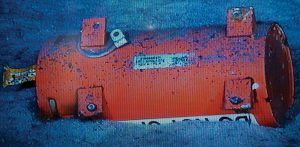 French investigator believes that the pilot, Dubois could have properly navigated the storm, but he was napping. “If the captain had stayed in position . . . it would have delayed his sleep by no more than 15 minutes, and because of his experience, maybe the story would have ended differently,” chief French investigator Alain Bouillard said. A search was quickly organized, but the plane sank to the ocean floor and wasn’t found for nearly two years. An oil slick thought to have been left by the downed Air France flight was spotted on June 3, 2009. Search and rescue was the toughest part in trying to solve the mystery of Flight 447’s disappearance over the Atlantic Ocean back on June 1st, 2009. Some wreckage was found a few days after the crash, but the probable cause couldn’t properly be determined until they found the black box, which took was about two years later. Of the bodies of the 228 passengers and crew, 74 remain lost in the water after the search
French investigator believes that the pilot, Dubois could have properly navigated the storm, but he was napping. “If the captain had stayed in position . . . it would have delayed his sleep by no more than 15 minutes, and because of his experience, maybe the story would have ended differently,” chief French investigator Alain Bouillard said. A search was quickly organized, but the plane sank to the ocean floor and wasn’t found for nearly two years. An oil slick thought to have been left by the downed Air France flight was spotted on June 3, 2009. Search and rescue was the toughest part in trying to solve the mystery of Flight 447’s disappearance over the Atlantic Ocean back on June 1st, 2009. Some wreckage was found a few days after the crash, but the probable cause couldn’t properly be determined until they found the black box, which took was about two years later. Of the bodies of the 228 passengers and crew, 74 remain lost in the water after the search  was finally called off.
was finally called off.
When the black box was finally found, the investigation into the crash could really begin. Flight 447 was going from Rio de Janeiro to Paris when it encountered a thunderstorm. It is now believed that the probable cause was a disconnect from autopilot due to ice crystals in the pitot tubes. With an aerodynamic stall, the crew couldn’t recover and eventually it led to the plane falling into the ocean. The inexperienced pilots did what most people would have in a stall, they pulled up. This only made the situation worse. By the time the experienced pilot got to the cockpit, it was too late to save the plane.

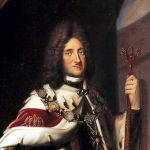 Growing up with the last name of Spencer, I have always been aware that I was related to the Spencers in England, including Princess Diana, her sons and grandchildren, as well as Winston Spencer Churchill. Of course, these relationships were on the Spencer side of my family, but recently, I have been stumbling upon, or in reality, tripping over royalty of the Pattan side of my family, as well as more direct ties to the English throne on the Spencer side of the family.
Growing up with the last name of Spencer, I have always been aware that I was related to the Spencers in England, including Princess Diana, her sons and grandchildren, as well as Winston Spencer Churchill. Of course, these relationships were on the Spencer side of my family, but recently, I have been stumbling upon, or in reality, tripping over royalty of the Pattan side of my family, as well as more direct ties to the English throne on the Spencer side of the family.
When I spoke to my Aunt Sandy Pattan about the king connection of the Pattan side, she said that she knew of Queen Victoria, who I had not found yet, by the way, but she was unaware of the kings in the family line, and was very surprised about where they came from…not the family background, but rather the global locations. The first one to show up was King Charles II of England, who is my 1st cousin 11 times removed. King Charles was actually the king of Scotland from January 30, 1649 to September 3, 1651, and then king of England, Scotland, and Ireland from May 29, 1660 until his death on February 6, 1685 from a stroke.
The next king to show up was King Frederick I of Prussia, who was my 2nd cousin 10 times removed. He was king from January 18, 1701 until his death on February 25, 1713 in Berlin. Next came King Louis XIV of France, who is my 3rd cousin 10 times removed. He was king from May 14, 1643 until his death on September 1, 1715 of gangrene. The next king to show up was King Frederick William II of Prussia, who is my 4th cousin 7 times removed. He was king from August 17, 1786 until his passing on November 16, 1797 in Potsdam, Germany. 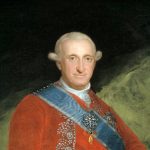

 The next king was King Charles IV of Spain, who is my 4th cousin 6 times removed. He was king from December 14, 1788 to March 18, 1808. He did not end his reign upon his death, but rather, riots and popular revolt at the winter palace in Aranjuez, forced him to abdicate to his son, Ferdinand VII. He died on January 20, 1819 in Palazzo Barberini, Rome.
The next king was King Charles IV of Spain, who is my 4th cousin 6 times removed. He was king from December 14, 1788 to March 18, 1808. He did not end his reign upon his death, but rather, riots and popular revolt at the winter palace in Aranjuez, forced him to abdicate to his son, Ferdinand VII. He died on January 20, 1819 in Palazzo Barberini, Rome.
The next king to present himself was King Louis XVI of France, who is of course, related to an earlier king. King Louis XVI is my 4th cousin 6 times removed. He was king of France from May 10, 1774 to September 4, 1792, and oddly King of the French from September 4, 1791 to September 21, 1792. On August 13, 1792, an angry mob tried to kill the queen, thinking that she was too frivolous, but decided to go after the king instead. He tried to flee with his family to Paris, but was captured on August 13, 1792, and imprisoned. His titles were stripped from him on September 21, 1792. He died on January 21, 1793 by execution on the guillotine at just 38 years of age. Finally came Charles VI, Holy Roman Emperor, who is my 4th cousin 9 times removed. He was emperor from October 12, 1711 until his death on October 20, 1740, following a hunting trip on which he consumed a meal of poisonous death cap mushrooms.
I thought that finding out that my mom’s family was related to so many kings, and even an emperor, was 
 going to be the most shocking thing, but for me, I think the most shocking thing was the way that some of these kings died. It showed me that the times that these kings lived in were not only dangerous in that many of the health issues that are curable now, weren’t back then. But more shocking for me was that fact that kings were sometimes no more safe than anyone else. To accidently eat poison mushrooms would be a horrible death, and I can’t imagine going through that, but to be executed by guillotine is one of the most gruesome things I can think of, and that was not totally uncommon back then.
going to be the most shocking thing, but for me, I think the most shocking thing was the way that some of these kings died. It showed me that the times that these kings lived in were not only dangerous in that many of the health issues that are curable now, weren’t back then. But more shocking for me was that fact that kings were sometimes no more safe than anyone else. To accidently eat poison mushrooms would be a horrible death, and I can’t imagine going through that, but to be executed by guillotine is one of the most gruesome things I can think of, and that was not totally uncommon back then.
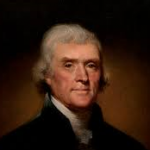 With everyone arguing about whether or not religion has a place in politics, today seemed a good day to discuss the common misconception people have about the constitutional amendment they so often quote as the basis for their arguments. Our founding fathers came to this country, largely because in England they were forced to attend the Church of England…by law. Whether they agreed or not, or even whether the church was teaching correctly or not, was completely irrelevant. That was the church, and that was where people were expected to go. For any who wonder why so many of us are against the influx of Muslims, this is the reason…not because we disagree with their religion, but because it is the goal of Islam to force the entire world to convert to Islam. Our founding fathers, and indeed most Americans believe so strongly in the right to choose which religion, or even the lack of a religion, we want to practice, that we are willing to fight to keep that right. This amendment is simply not negotiable.
With everyone arguing about whether or not religion has a place in politics, today seemed a good day to discuss the common misconception people have about the constitutional amendment they so often quote as the basis for their arguments. Our founding fathers came to this country, largely because in England they were forced to attend the Church of England…by law. Whether they agreed or not, or even whether the church was teaching correctly or not, was completely irrelevant. That was the church, and that was where people were expected to go. For any who wonder why so many of us are against the influx of Muslims, this is the reason…not because we disagree with their religion, but because it is the goal of Islam to force the entire world to convert to Islam. Our founding fathers, and indeed most Americans believe so strongly in the right to choose which religion, or even the lack of a religion, we want to practice, that we are willing to fight to keep that right. This amendment is simply not negotiable.
Nevertheless, the misconception comes when people misstate the first amendment, claiming that it means that religion has no place in politics. That statement is fundamentally wrong, and not what Thomas Jefferson had in mind when in 1779, he wrote the “Bill for Establishing Religious Freedom.” America was settled by people who wanted religious freedom, and Jefferson believed in freedom of religion, too. He didn’t believe that churches  should be funded by taxes, thereby giving the government authority in the beliefs of the church. The bill said that “no man shall be compelled (forced) to frequent (go to) or support any religious worship, place or ministry whatsoever.” Some people were against it even then, and it did not become law at that time. It did, however, create a friendship between Jefferson and James Madison, who believed the say way.
should be funded by taxes, thereby giving the government authority in the beliefs of the church. The bill said that “no man shall be compelled (forced) to frequent (go to) or support any religious worship, place or ministry whatsoever.” Some people were against it even then, and it did not become law at that time. It did, however, create a friendship between Jefferson and James Madison, who believed the say way.
In 1784, Jefferson left for Paris, France to perform his duties as US foreign minister to France. That left James Madison with the task of making the bill into law. No easy task, because it had failed on its first attempt. Undaunted, Madison presented the bill to the Virginia Assembly, and with a few minor changes, it passed in 1786. Elated, Madison sent word to Jefferson in Paris. When the bill passed, Virginia became the first state to free religions from state rule. It is still part of Virginia’s constitution. It was used as a model for other state’s constitutions. It was also used as a model for the religious language in the Bill of Rights: “Congress shall make no law respecting an establishment of religion, or prohibiting the free exercise thereof.” If people would read the Constitutional amendment and the Bill of Rights carefully, they would, indeed find that it says nothing at all about keeping religion out of politics, and everything about keeping the government out of religions. Thomas 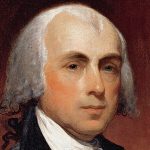 Jefferson believed the Virginia Statute of Religious Freedom was one of his greatest achievements. So strongly did he believe in his accomplishments, that he wanted his tombstone to list the “things that he had given the people.” It reads: “Here was buried Thomas Jefferson Author of the Declaration of Independence of The Statute of Virginia for Religious Freedom And Father of the University of Virginia.” Why did Jefferson want the Statute for Religious Freedom on his tombstone? It was because he could see what could happen when one religion was allowed to hold hostage the rest of the nation, or indeed, the world. That is why we will never give up the fight, and we will oppose all religions that would try to force themselves on us. People should stop using this convenient misconception to try to further their own agendas in this nation.
Jefferson believed the Virginia Statute of Religious Freedom was one of his greatest achievements. So strongly did he believe in his accomplishments, that he wanted his tombstone to list the “things that he had given the people.” It reads: “Here was buried Thomas Jefferson Author of the Declaration of Independence of The Statute of Virginia for Religious Freedom And Father of the University of Virginia.” Why did Jefferson want the Statute for Religious Freedom on his tombstone? It was because he could see what could happen when one religion was allowed to hold hostage the rest of the nation, or indeed, the world. That is why we will never give up the fight, and we will oppose all religions that would try to force themselves on us. People should stop using this convenient misconception to try to further their own agendas in this nation.
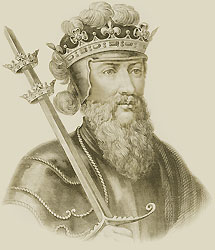 Before scientists learned how to predict the weather, and before the weather predicting equipment came into being, people often found themselves outside, without any place to get under cover, during some really bad storms. Such was the case on Monday, April 13, 1360…later dubbed Black Monday, when a hail storm killed approximately 1,000 English soldiers in Chartres, France. England and France were in the middle of the Hundred Years’ War. The war began in 1337, and by 1359, King Edward III of England was pushing forward to conquer France. In October he sent a massive force across the English Channel to Calais. The French wouldn’t fight back, but rather stayed behind protective walls that Winter, allowing the King Edward’s men to pillage the countryside.
Before scientists learned how to predict the weather, and before the weather predicting equipment came into being, people often found themselves outside, without any place to get under cover, during some really bad storms. Such was the case on Monday, April 13, 1360…later dubbed Black Monday, when a hail storm killed approximately 1,000 English soldiers in Chartres, France. England and France were in the middle of the Hundred Years’ War. The war began in 1337, and by 1359, King Edward III of England was pushing forward to conquer France. In October he sent a massive force across the English Channel to Calais. The French wouldn’t fight back, but rather stayed behind protective walls that Winter, allowing the King Edward’s men to pillage the countryside.
Then in April of 1360 King Edward’s forces burned the Paris suburbs and marched  toward Chartres. The night of April 13, while they were camped outside the town, planning a dawn attack, a sudden storm developed. Lightning struck, killing several soldiers, and hailstones began pelting the men, and scattering the horses. One man described it as “a foul day, full of myst and hayle, so that the men dyed on horseback” Two of the English leaders were killed and the troops panicked…they had no shelter from the storm. They were at it’s mercy. King Edward’s forces suffered heavy losses that some of the men saw as a sign from God, that they should not be fighting against France. King Edward was convinced that they needed to negotiate peace with the French, and on May 8, 1360, the Treaty of Bretigny was signed, marking the end of the first phase of the Hundred Years’ War. King Edward renounced all claims to the throne of France, but he was given control of the land in the north of the country. Nine years later, fighting resumed
toward Chartres. The night of April 13, while they were camped outside the town, planning a dawn attack, a sudden storm developed. Lightning struck, killing several soldiers, and hailstones began pelting the men, and scattering the horses. One man described it as “a foul day, full of myst and hayle, so that the men dyed on horseback” Two of the English leaders were killed and the troops panicked…they had no shelter from the storm. They were at it’s mercy. King Edward’s forces suffered heavy losses that some of the men saw as a sign from God, that they should not be fighting against France. King Edward was convinced that they needed to negotiate peace with the French, and on May 8, 1360, the Treaty of Bretigny was signed, marking the end of the first phase of the Hundred Years’ War. King Edward renounced all claims to the throne of France, but he was given control of the land in the north of the country. Nine years later, fighting resumed  when the King of France claimed that King Edward had not honored the treaty. the last phase of the Hundred Years’ War finally ended in 1453.
when the King of France claimed that King Edward had not honored the treaty. the last phase of the Hundred Years’ War finally ended in 1453.
Hailstones have long been known to be very deadly. The larger the stone, of course, the more deadly it is. Some have been known to crush the roofs of cars. The largest hailstone recorded in modern times was found in Aurora, Nebraska. It was seven inches in diameter, about the size of a soccer ball. Hail typically falls at about 100 miles per hour, which explains why getting hit with one can really hurt you, no matter how small the stone might be, and why huge hailstones would mean instant death.

